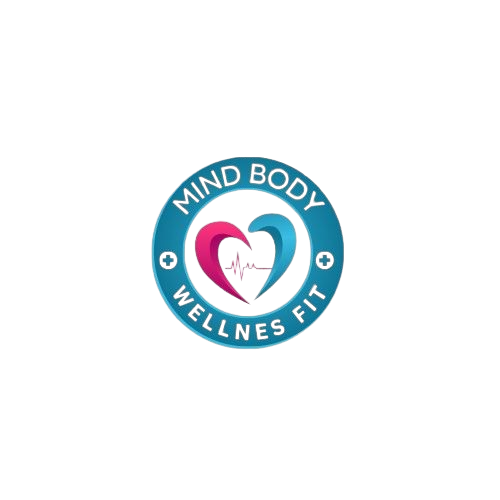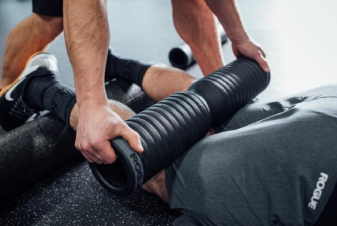Body tempering is capturing the attention of fitness enthusiasts worldwide. Developed by renowned powerlifter Donnie Thompson, this innovative method mobilizes soft tissues by rolling weighted cylinders over muscles and joints. Its unique approach to muscle recovery and preparation for activity has quickly established it as a favored tool among athletes and casual gym-goers alike.
Understanding Body Tempering
Body tempering involves the controlled application of pressure through weighted cylinders that roll over targeted areas of the body. The method is designed to mobilize soft tissues, facilitating better circulation and reducing muscle stiffness. The weighted cylinders, ranging typically from 20 to 200 pounds, are engineered to distribute pressure evenly over a larger surface area. This even distribution is key, as it minimizes the risk of injury while maximizing the therapy’s benefits.
The science behind body tempering is rooted in the concept of soft tissue mobilization. By applying pressure in a controlled manner, the muscles, fascia, and connective tissues experience a gentle stretching and massaging effect. This process can help prepare the tissues for intense physical activity, ensuring that muscles are more pliable and ready to perform at their best. Moreover, the method not only aids in pre-workout preparation but also plays a significant role in post-exercise recovery, contributing to reduced muscle soreness and improved overall performance.
The Origins and Rise in Popularity
Donnie Thompson, a well-respected figure in powerlifting circles, is credited with inventing body tempering. His work in developing this method has revolutionized how athletes approach warm-ups and recovery. Initially popularized among powerlifters and strength athletes, body tempering has expanded its reach to encompass a broader audience within the fitness community.
The popularity of body tempering can be attributed to its effectiveness compared to traditional methods of soft tissue mobilization. While manual massage and static stretching have long been used to maintain muscle flexibility and alleviate soreness, many practitioners have found that body tempering offers longer-lasting effects. This efficiency in muscle recovery has contributed significantly to its rapid adoption, especially in environments where every minute counts—such as competitive sports and high-intensity training sessions.
With more fitness professionals advocating for its use, body tempering is now a common recommendation for those looking to prevent injuries and enhance athletic performance. Its integration into modern training routines underscores a shift toward more innovative recovery techniques that not only focus on immediate benefits but also on sustaining long-term muscular health.
How Body Tempering Works
The process of body tempering is straightforward yet requires precision to be effective and safe. Here is a detailed breakdown of how the technique works:
Preparation and Warm-Up: Before beginning any body tempering session, it is essential to engage in a general warm-up to increase blood flow and elevate muscle temperature. This preliminary step prepares the body for the more targeted pressure of the weighted cylinders.
Selection of Equipment: Tempering devices come in various weights, typically ranging from 20 to 200 pounds. The appropriate weight is chosen based on the individual’s body size, muscle mass, and the specific area targeted for therapy. Using the right weight is critical; too light may not provide sufficient pressure, while too heavy could lead to discomfort or injury.
Application of the Weighted Cylinder: The technique involves slowly rolling the weighted cylinder over the target muscle or joint. The movement is controlled and deliberate, allowing the pressure to be evenly distributed over the area. This helps in breaking down adhesions in the muscle fibers and promoting better mobility.
Repetition and Duration: Depending on the area being treated and the individual’s needs, the process may be repeated several times. Consistency is key; regular sessions can lead to noticeable improvements in muscle recovery, flexibility, and overall performance.
Cooling Down and Integration: Following the session, a cooldown period helps stabilize the muscles and integrate the benefits of the tempering process. This stage often includes light stretching or a gentle walk, ensuring that the muscles adapt gradually to the newly increased mobility.
This step-by-step method not only provides immediate relief from muscle tightness but also contributes to long-term muscle health and performance enhancement. The controlled pressure encourages the muscles to relax, facilitating the repair of micro-tears and the efficient removal of metabolic waste products.
Benefits of Body Tempering
Body tempering offers a range of benefits that set it apart from other recovery techniques. Understanding these advantages can help individuals decide how best to incorporate it into their fitness regimen.
Enhanced Muscle Recovery: Body tempering is known for its ability to significantly improve muscle recovery. By mobilizing soft tissues, it promotes better blood flow and accelerates the healing process. Athletes often experience reduced muscle soreness and quicker recovery times, allowing them to train more effectively with less downtime.
Improved Flexibility and Mobility: Regular sessions of body tempering can lead to greater flexibility and joint mobility. The even distribution of pressure helps in releasing tension from muscles and fascia, which can be especially beneficial for those recovering from injuries or managing chronic stiffness.
Long-Lasting Effects: Compared to manual massage or static stretching, the effects of body tempering can last longer. This is particularly important for athletes who require sustained muscle readiness over extended periods of training and competition.
Prevention of Injury: By ensuring that muscles and joints are properly prepared for intense activity, body tempering reduces the likelihood of injuries. It addresses imbalances and tightness that may lead to strains or sprains, making it an effective preventative measure.
Increased Athletic Performance: With improved recovery and enhanced mobility, athletes often report better performance in their respective sports. Body tempering not only prepares the body for the rigors of exercise but also supports ongoing training by reducing the risk of overuse injuries.
These benefits highlight why body tempering has become an essential part of many athletes’ and fitness enthusiasts’ recovery routines. Its capacity to deliver both immediate and long-term results makes it a versatile tool in any fitness arsenal.
Incorporating Body Tempering Into Your Routine
For those interested in adding body tempering to their fitness routine, there are several practical tips to consider. Integrating this method can be simple with the right guidance and adherence to safety measures.
Start with Professional Guidance: If you are new to body tempering, consider consulting a fitness professional or physical therapist. They can demonstrate the proper technique and help determine the appropriate weight and frequency for your needs.
Use the Right Equipment: Investing in quality tempering devices is crucial. Ensure that the cylinders are designed to distribute pressure evenly and are made from durable materials. A variety of weights should be available to adjust the intensity as needed.
Consistency is Key: Like any other recovery method, the benefits of body tempering are best realized through regular practice. Incorporate sessions into your weekly routine, especially on days when you engage in intense training or after particularly strenuous workouts.
Combine with Other Recovery Techniques: Body tempering can be used in conjunction with other recovery methods such as foam rolling, dynamic stretching, or massage therapy. Each method targets the muscles in a slightly different way, and together they can offer a more comprehensive approach to muscle care.
Monitor Your Body’s Response: Pay attention to how your body responds after each session. While some soreness is normal, excessive discomfort may indicate that the pressure is too high or the technique needs adjustment. Modifying the intensity or duration of sessions based on feedback from your body is essential for long-term success.
Warm-Up and Cool Down: Always include proper warm-up and cool-down phases around your tempering sessions. This practice not only prepares your muscles for the treatment but also helps integrate the benefits post-session.
By taking these steps, individuals can safely incorporate body tempering into their recovery and training programs, optimizing performance and minimizing injury risks.
Takeaway
Body tempering has emerged as a valuable technique for athletes and fitness enthusiasts seeking efficient muscle recovery and enhanced performance. This method’s ability to mobilize soft tissues using weighted cylinders offers distinct advantages over more conventional recovery strategies such as foam rolling or static stretching. With benefits ranging from improved flexibility and joint mobility to longer-lasting recovery effects, body tempering continues to redefine modern approaches to athletic training and injury prevention.
By integrating body tempering into a balanced training regimen, individuals can not only expedite recovery but also maintain overall muscle health and prevent injuries. Whether you are a seasoned athlete or just beginning your fitness journey, exploring this innovative technique may offer a significant edge in both training outcomes and long-term wellness.
Embracing body tempering involves careful consideration of equipment, technique, and consistency. With the right approach, this method can be a transformative addition to your fitness routine—empowering you to push past physical limits and achieve new levels of performance.
For those ready to experience its benefits firsthand, consider consulting with a professional to tailor a body tempering regimen that fits your unique needs. As more research and user testimonials continue to emerge, body tempering is poised to remain a cornerstone of modern recovery techniques, offering an effective, science-backed method to help you recover better and train harder.
Whether used on its own or combined with other recovery practices, the innovative approach of body tempering is changing the way we view muscle care. With its roots in the practices developed by Donnie Thompson, it stands as a testament to the evolution of fitness recovery methods—one that supports a healthier, more resilient body ready to tackle any challenge.






